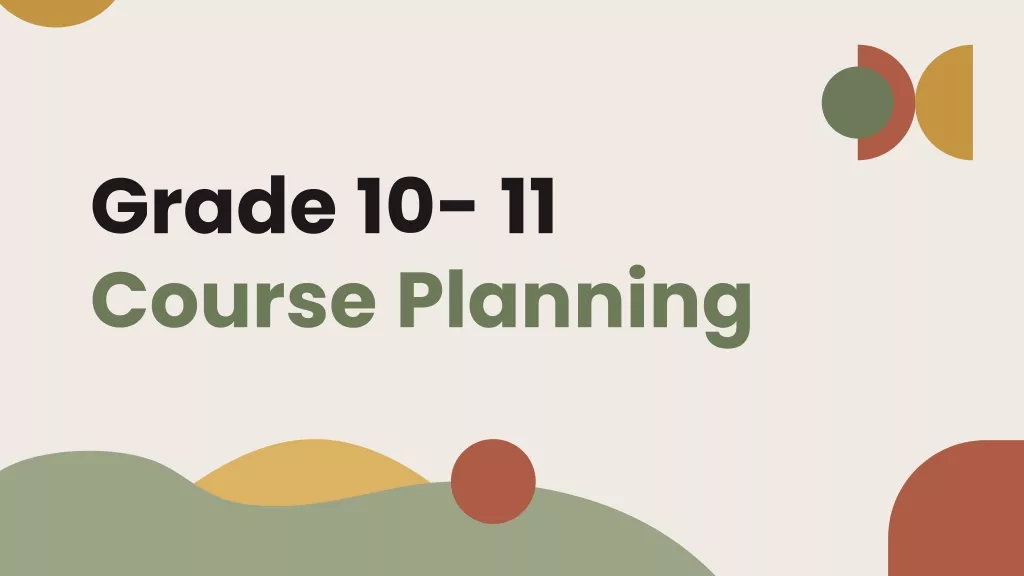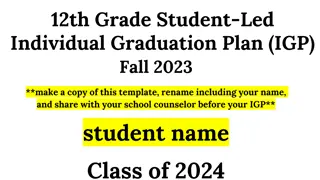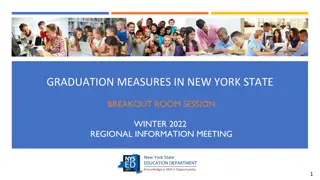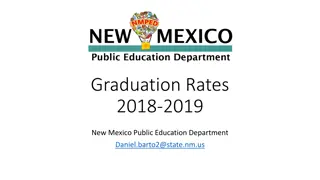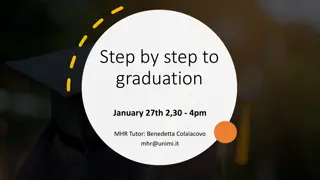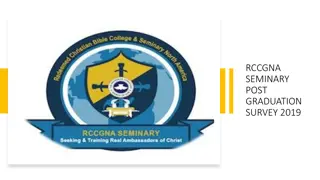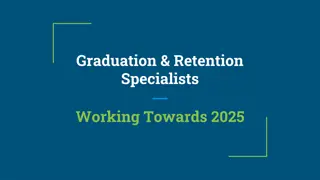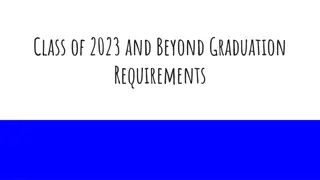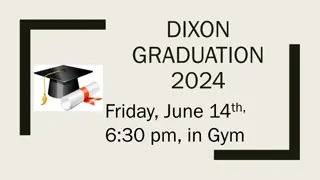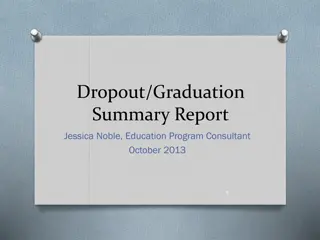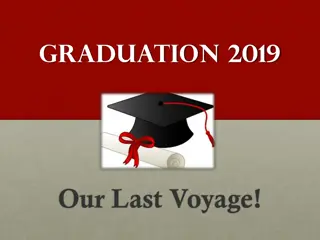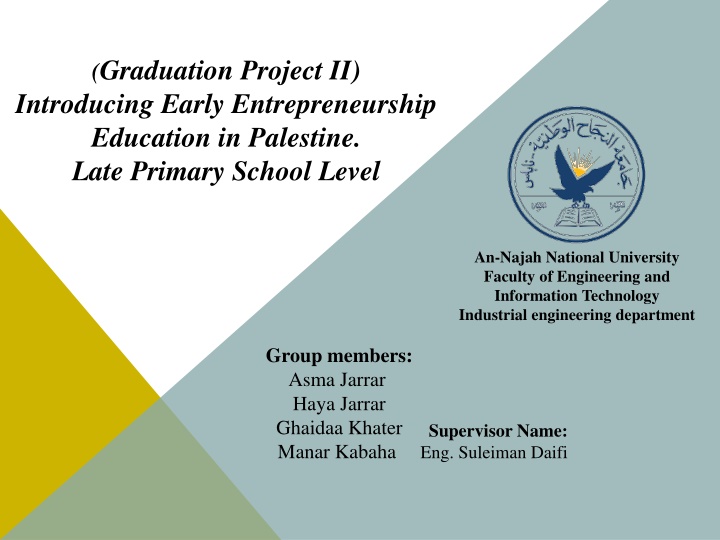
Entrepreneurship Education Initiative at Late Primary School Level in Palestine
This project aims to introduce early entrepreneurship education in Palestine to foster creative thinking and innovation among school students. By developing trainer and trainee guides, the initiative prepares students for future entrepreneurial endeavors, addressing the need for innovative and empowered individuals in the face of high unemployment rates.
Download Presentation

Please find below an Image/Link to download the presentation.
The content on the website is provided AS IS for your information and personal use only. It may not be sold, licensed, or shared on other websites without obtaining consent from the author. If you encounter any issues during the download, it is possible that the publisher has removed the file from their server.
You are allowed to download the files provided on this website for personal or commercial use, subject to the condition that they are used lawfully. All files are the property of their respective owners.
The content on the website is provided AS IS for your information and personal use only. It may not be sold, licensed, or shared on other websites without obtaining consent from the author.
E N D
Presentation Transcript
(Graduation Project II) Introducing Early Entrepreneurship Education in Palestine. Late Primary School Level An-Najah National University Faculty of Engineering and Information Technology Industrial engineering department Group members: Asma Jarrar Haya Jarrar Ghaidaa Khater Manar Kabaha Supervisor Name: Eng. Suleiman Daifi
CONTENT: Problem statement Project description and benefits Literature review Development of trainer and trainee guides Description of guides Conclusion Recommendation 2
PROBLEM STATEMENT In Palestine, previous studies have shown that there is little to no impact of the school teaching system on the development of entrepreneurial skills, creative thinking and innovation. With the increasing unemployment rate and the ever-growing number of graduates, the need for a generation that is empowered by their ideas and fuelled by creativity is higher than ever. 3
PROJECT DESCRIPTION AND BENEFITS This project is one of the development projects that target members of the community in order to upgrade them in the future and build a prosperous future for them through the development of entrepreneurial thinking. This project targeted school students to facilitate the establishment of the idea of how to be entrepreneurs and what is the role of entrepreneurial thinking in securing a future without unemployment. The first step after research in this project was to develop two guides (trainee and trainer) that introduce and develop entrepreneurial ideas and skills among students through fresh topics and some activities that develop the personality of students and encourage their entrepreneurial thinking, to prepare their mentality to take on a project of their own benefit to them in the future, whether economic, social or humanitarian benefits, or o benefit from these skills in their day to day life. 4
LITERATURE REVIEW Figure 1, Methodology of research 5
LITERATURE REVIEW: APPROACH IN PALESTINE In Palestine, EE is mainly found in three areas: Higher education: EE is available as courses in some universities. Public school system: Tawjehi has an Entrepreneurship and business management branch, and the offer a subject called (small enterprises). (the content is only available for 11 and 12 graders that choose this branch). Injaz Palestine: a part of JA worldwide, and provide entrepreneurship and vocational education workshops. Figure 2, EE Teaching approach in Palestine. 6
LITERATURE REVIEW: EE THEMES The common practice is summarized by the three generic themes of EE: Teaching about entrepreneurship programs. Teaching for entrepreneurship programs. Teaching through entrepreneurship programs. Figure 3, EE themes 7
LITERATURE REVIEW: STANDARDS The Consortium for Entrepreneurship Education in Columbus, Ohio, have developed a set entrepreneurship standards are applied by many programs worldwide of education, standards for these Figure 4, How the National Content Standards for EE were studied 8
LITERATURE REVIEW: BACKWARD DESIGN Backward design starts in reverse, taking the desired results, the standards set to accomplish, and targeted goals, to reach performance standards to equip students with the set of skills targeted instead of starting with the teaching activities and how to teach the content. Backward design has three stages: Clarify desired results. Determine evidence. Learning plan. measures from Figure 5, research on content development methods. 9
DEVELOPMENT OF THE PROJECT The implementation of work took two directions for introducing two educational materials which are the student guide and teacher/volunteer guide with related additions and enrichment material. Figure 6&7, trainer and trainee guides. 10
DEVELOPMENT OF THE PROJECT The working plan was started with reviewing researches, paper, and case studies education around the targeted age group, which lead to establishing the table of contents. After knowing what topics to include in the material, entrepreneurship education standards were studied to follow in the material writing process, after the material of the two guides was finished, a second look was given to the standard to choose the ones covered in the material, the following table shows the correlation between the material and the Standards. related to entrepreneurial 11
Development of the project: Standards 12 Table 1, correlation of standards and the content.
DEVELOPMENT OF THE PROJECT: DESIGN PROCESS Objectives and desired results of each objective were written to fit the standards, going by the first step of outcome-based education. The following task was to determine assessment evidence which was decided to be a set of assessment questions to each subject and suggested activities, the following table shows each assessment activity in each subject, and which of the facets of understanding from UbD do these activities meet. 13
14 Figure 8, Assessment questions
Development of the project: Assessment 15 Table 2, Understanding Facets Met in each Activity/Section of each Subject.
Development of the project: Design process 16 Figure 9, the process of designing and developing two guides directed at the trainer and the trainee.
DESCRIPTION OF GUIDES Trainee guide: which contains the activities in a simple, smooth and colorful sequence and practical examples which suits the targeted age group, the content is divided into three main sections, the warm- up section, the main activities section, and the wrap- up section. Trainer guide: is a detailed and rich material designed to open up teacher prospects with a simple and clear view, contains three main sections linked to each topic, these are the introduction, subject preparations, and the activities description. 17
20 Table 3, Framework of subject one
21 Table 4, Framework of subject two
22 Table 5, Framework of subject three
23 Table 6, Framework of subject four
24 Table 7, Framework of subject five
CONCLUSION This project worked on researching current developments in the field of entrepreneurship education leading to the design and development of two guides, one directed at trainees and another directed at trainers, to complement each other in the hope of creating a new and satisfactory learning experience for 11 and 12 years old. Working on the project the research, development, and improvement aimed parts of Industrial Engineering were used to create a better, inclusive, and higher quality learning experience for students. 25
RECOMMENDATION Continue the research to help the program achieve the best results in the various regions of the West Bank and Gaza Strip, despite the different cultural environment in each region. Further testing of the designed material is needed to determine the effectiveness of it, and to find out the areas where it can be improved upon, implementation is recommended to start in small groups, singular session workshops while making sure to get the required feedback from participants both on the trainees end and the trainers end. When implementing, fully understand the goals of the learning experience and the setting needed to be provided to achieve maximum benefits and get the desired results from students. 26
THANK YOU Any Questions?

